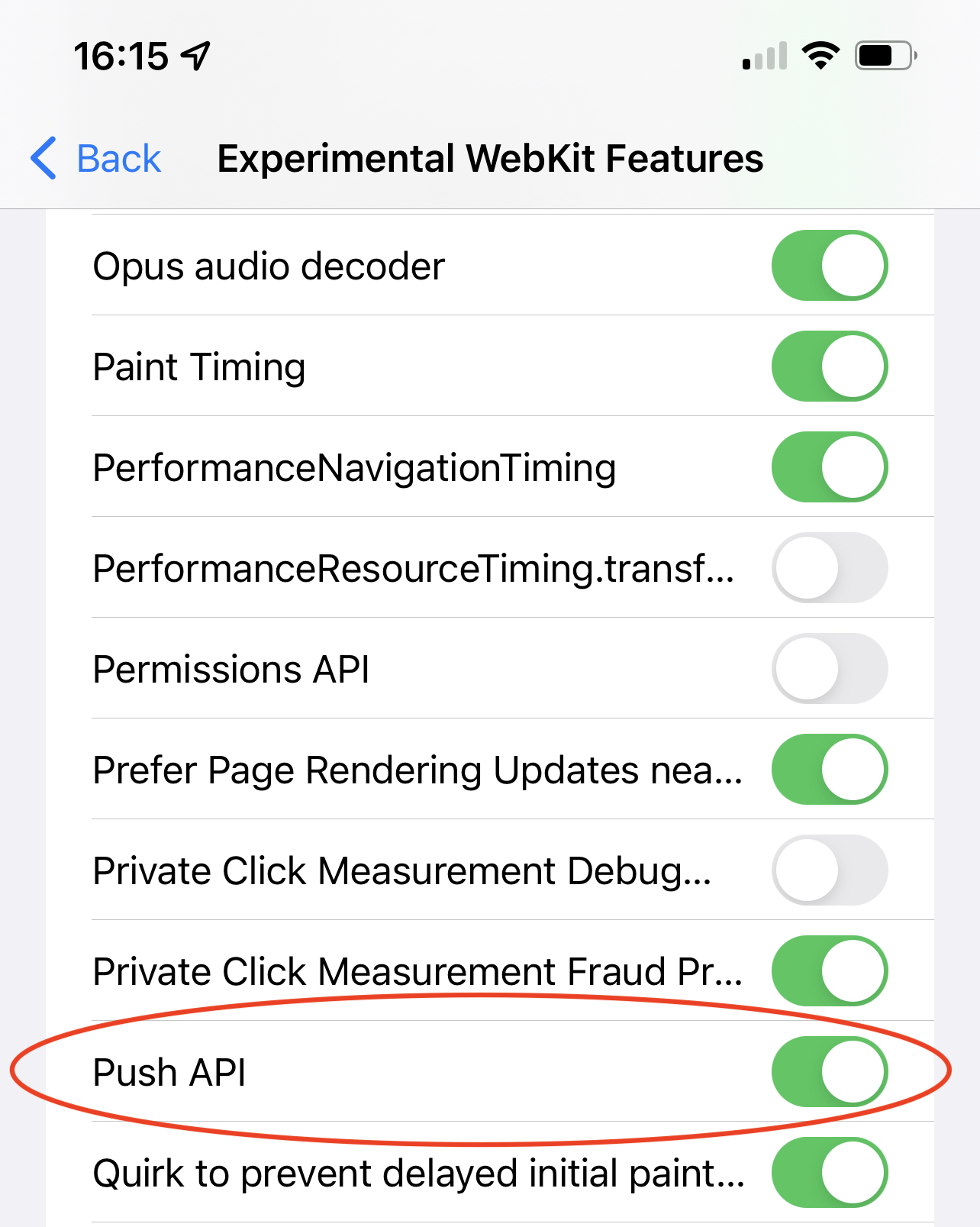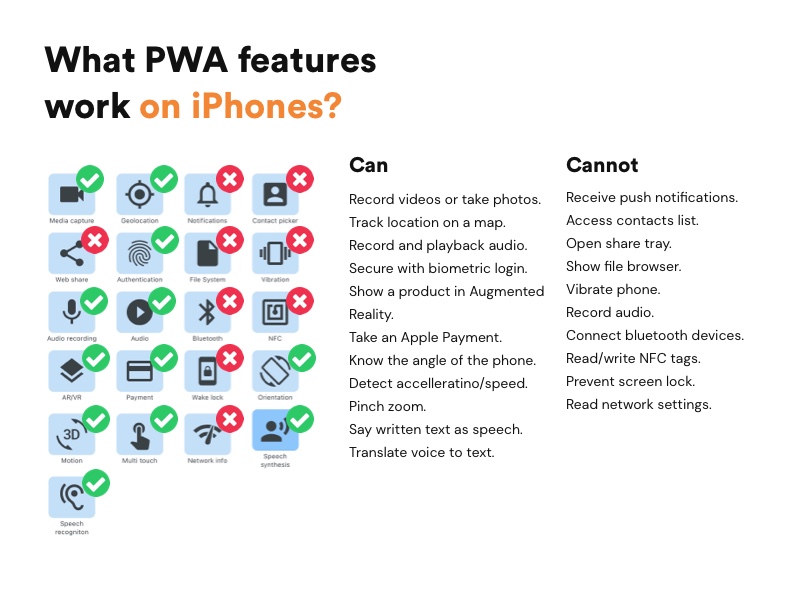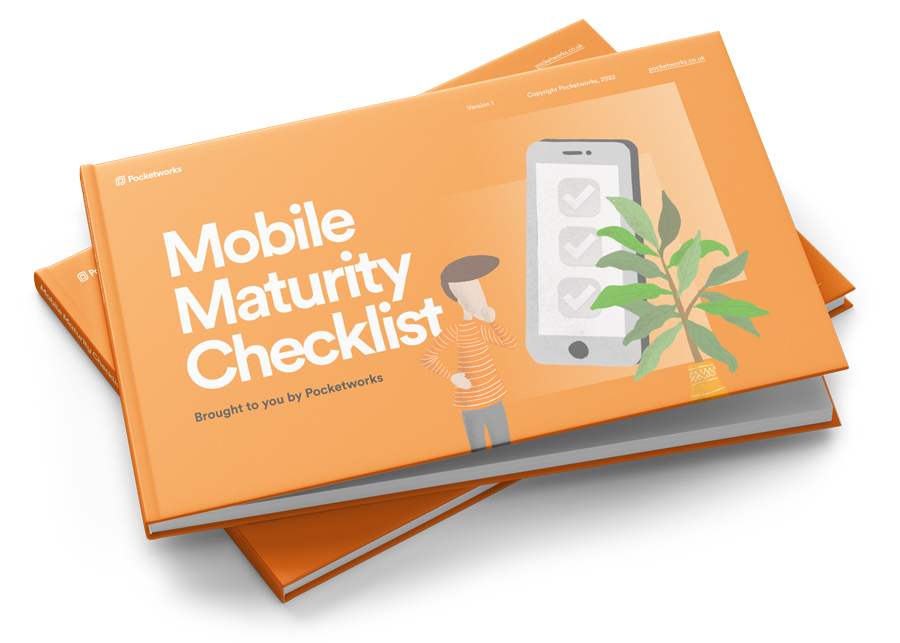Updated 21st April 2022
Progressive Web Apps (PWAs) are essentially websites that meet the quality bar set by many native mobile apps. The idea is that your customers should feel like they're using a really slick "app", even though it's a website.
The thing is, PWAs work really well for Android users and not so well for iPhone users. So let's look at why, which may help you decide if they are the right choice for your needs.
A few reasons you might choose to build a PWA instead of a native mobile app:
- Developing a PWA should cost less
- If you already invested in web tech, you might get a PWA to market faster
- If you have a web team already, they should be able to build your PWA
- You want your online SEO to take people straight into your app, such as a shopping app
- You're worried the download step required for an app will put people off
- You don't want to pay Apple or Google 15%-30% app store fees
- You're going to struggle to meet app store guidelines (tobacco products, alcohol, payments etc)
- You don't expect users to drop in and out of the app on an hourly basis, so it's ok for your app to be open in a browser tab that is harder for customers to get to.
So, there are some great reasons to create a PWA.
How popular are they?

A lot of companies are investing in Progressive Web Apps, including Starbucks, Uber and Google. Overall, the search term is declining. I'll see if I can find out why this is, it might not be due to declining popularity. Instead, it might be due to elements of PWAs becoming defacto standards. I'll find out!
There is a slight snag
Right now, PWAs might not be the right choice if you have a lot of customers using iPhones or iPads. This is because Apple devices don't support PWAs as well as Android ones.
Have a look at the limitations of PWAs on iPhones and see if this is a deal-breaker for your app.
- You cannot send customers a push notification
- If your app needs to store data offline, you might run into issues
- Customers are likely to see the app freeze when launched
- Users might struggle to add your app to their home screen
- You might not end up showing your customers a nice branded splash screen
- You can't change the app icon after a customer has added your app to their home screen
- You might have issues with the keyboard showing where you don't want it
- Audio playback over the web doesn't work very well
For most businesses, the first item on this list is the biggest issue. Not being able to send push notifications can often be a show-stopper.
However, there is hope. In iOS 15 there is an experimental feature to turn this on. It's set to be released in iOS 16. To turn this on, go to Settings → Safari → Advanced → Experimental Features → Push API and turn it on.

The only problem is I still can't get it to work. It's probably coming, but a hard thing to bet the farm on right now.
As for the other items in the list, many of these are mostly "detail". But often the detail is what makes for a good vs great customer experience. This is a pretty awesome technical write up from Jan 2022 of the current progress in iOS PWAs.
So what can you use
I ran a test using this site on 22nd April 2022 to see what worked on my iPhone 12 running iOS 15. You can run the test yourself by tapping on each icon. Here are the results.

A true story
We built a PWA in 2020 which was used by about 5,000 contractors of varying tech-savviness. There is now a need to make it into a native app because it's harder to support the installation process of a PWA, so some contractors end up getting logged out and also can't easily switch into the app whilst on the move because many just have it open as a web browser tab.
What the business really wants is a simple, dependable way for contractors to install the app and be able to open it. The business also feels that push notifications would help bring contractors back to the app when important information is available or the status of jobs changes.
The PWA was considered a big success and continues to add a lot of value to the business. In fact, it's considered a core product of the business that's essential for growth. So we got a lot of mileage from this PWA even though we're moving it to a native app.
If you need any help making the decision, feel free to get in touch with me. I love talking about this stuff.

